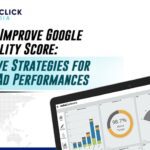PPC (Pay-Per-Click) advertising lets you promote your business by paying for each click on your ad.It lets you show ads on search engines and other sites, targeting specific keywords and audiences. PPC is important because it quickly brings traffic to your website, increases visibility, and gives you clear results. It helps you reach people who are looking for what you offer. This blog post aims to be a detailed guide on how to use PPC effectively, with tips to improve your campaigns and get a better return on your investment (ROI).
What is PPC Advertising?
PPC (Pay-Per-Click) advertising promotes your business by paying each time someone clicks on your ad. You put ads on search engines, social media, or other sites, targeting certain keywords or groups. When someone clicks on your ad, you pay a fee. PPC quickly drives people to your website, increases your brand’s visibility, and helps you reach those looking for what you offer. It also lets you see how your ads are performing and make changes to improve results.
Search Engine Advertising
Search engine advertising is a kind of PPC (Pay-Per-Click) where ads appear on search engine results pages.Advertisers pick keywords related to their business, and their ads appear when people search for those keywords.These ads usually appear at the top or bottom of search results. They help businesses find people looking for their products or services, bringing visitors to their website. This method provides quick visibility, shows how well the ads are performing, and lets you change bids and ad text to get better results.
Social Media PPC Advertising
Social media PPC advertising means paying to show ads on sites like Facebook, Instagram, Twitter, or LinkedIn. Your ads appear in people’s feeds based on what they like and do online. This helps businesses find people who might be interested in their products, leading to more clicks and visits to their website.Social media PPC allows you to target specific audiences, see how well your ads are doing, and make changes in real time to improve results. It boosts brand visibility and helps you achieve marketing goals with customized social media ads.
Setting Up a PPC Campaign
To set up a PPC campaign, follow these steps:
- Decide Goals: Choose what you want to achieve, like more website visits or sales.
- Pick Keywords: Select words people use to find your product.
- Create Ads: Write catchy text and make eye-catching visuals.
- Set Budget: Decide how much you’ll spend and how much you’ll pay per click.
- Choose Locations: Pick where and when your ads will appear, like on search engines or social media.
- Monitor and Adjust: Watch how your ads perform and make changes to improve results.
Keyword Research Tools
Keyword research tools help you find the best words for your PPC ads. They show how often people search for certain words, how hard it is to rank for them, and current trends. Popular tools are Google Keyword Planner, which gives info on keyword performance and costs; SEMrush, which provides keyword ideas and competitor info; and Ahrefs, known for its big keyword database. Ubersuggest and Moz Keyword Explorer are other helpful tools. Using these tools helps you pick the right keywords and get better results from your ads.
Writing Compelling Ad Copy
To create effective ad copy for PPC, start with an eye-catching headline that includes your main keyword. Write a clear description that explains the key benefits of your product or service. Use action words like “Shop Now” or “Learn More” to encourage clicks. Add a strong call-to-action (CTA) to tell users what to do next. Make sure your ad matches the keywords and landing page to stay relevant.Try different versions of your ad to see which one works best.
Managing and Optimizing Your PPC Campaign
Managing and optimizing your PPC campaign means regularly checking and adjusting your ads. Track important metrics like how many people click your ads, how many make a purchase, and how much you pay per click. See which keywords, ads, and targeting are working best. Change your bids and budgets based on this information to get the most out of your spending. Test different ad texts and landing pages to find what works best. Use A/B testing to compare options and make improvements. Keep updating your keyword list to stay current. Regular checks and changes keep your campaign effective and successful.
Tools for PPC Management
Tools for managing PPC ads help you make and track your ads. Google Ads is a popular tool for creating ads on search engines. It helps you find keywords, create ads, and check how well they are doing.Bing Ads does the same for Microsoft’s search engine. SEMrush and Ahrefs provide detailed keyword research and competitor information. WordStream helps manage ads across different platforms. Google Analytics tracks how users interact with your ads and whether they convert. These tools help you monitor performance, adjust bids, and refine your ad strategies to make your campaigns more effective.




